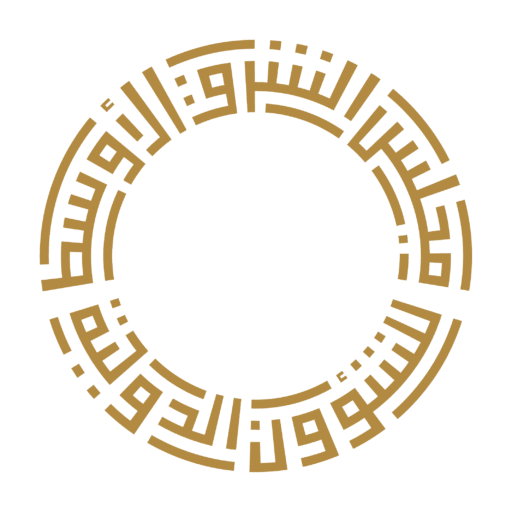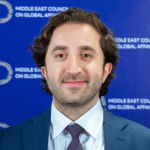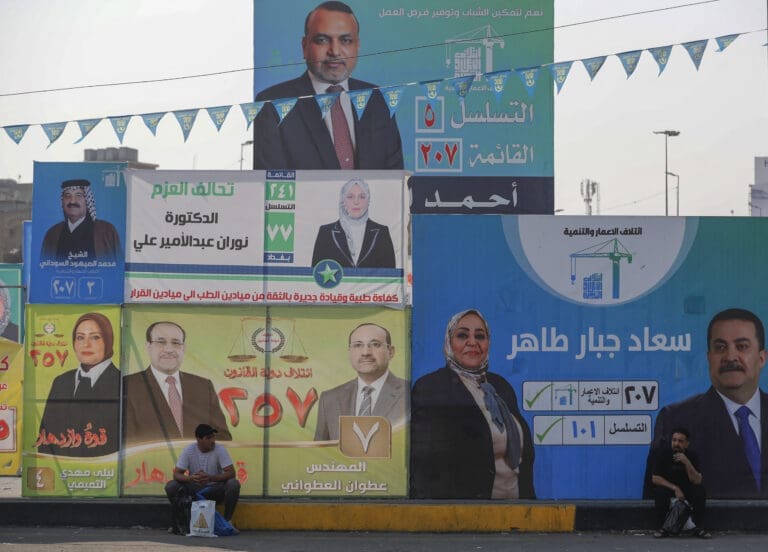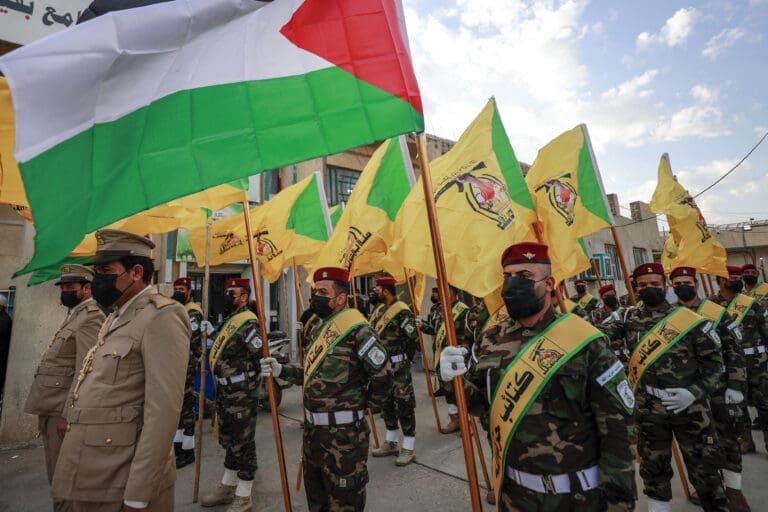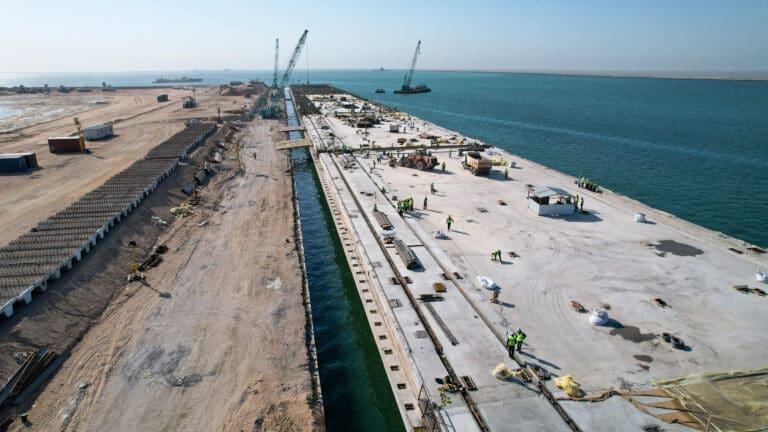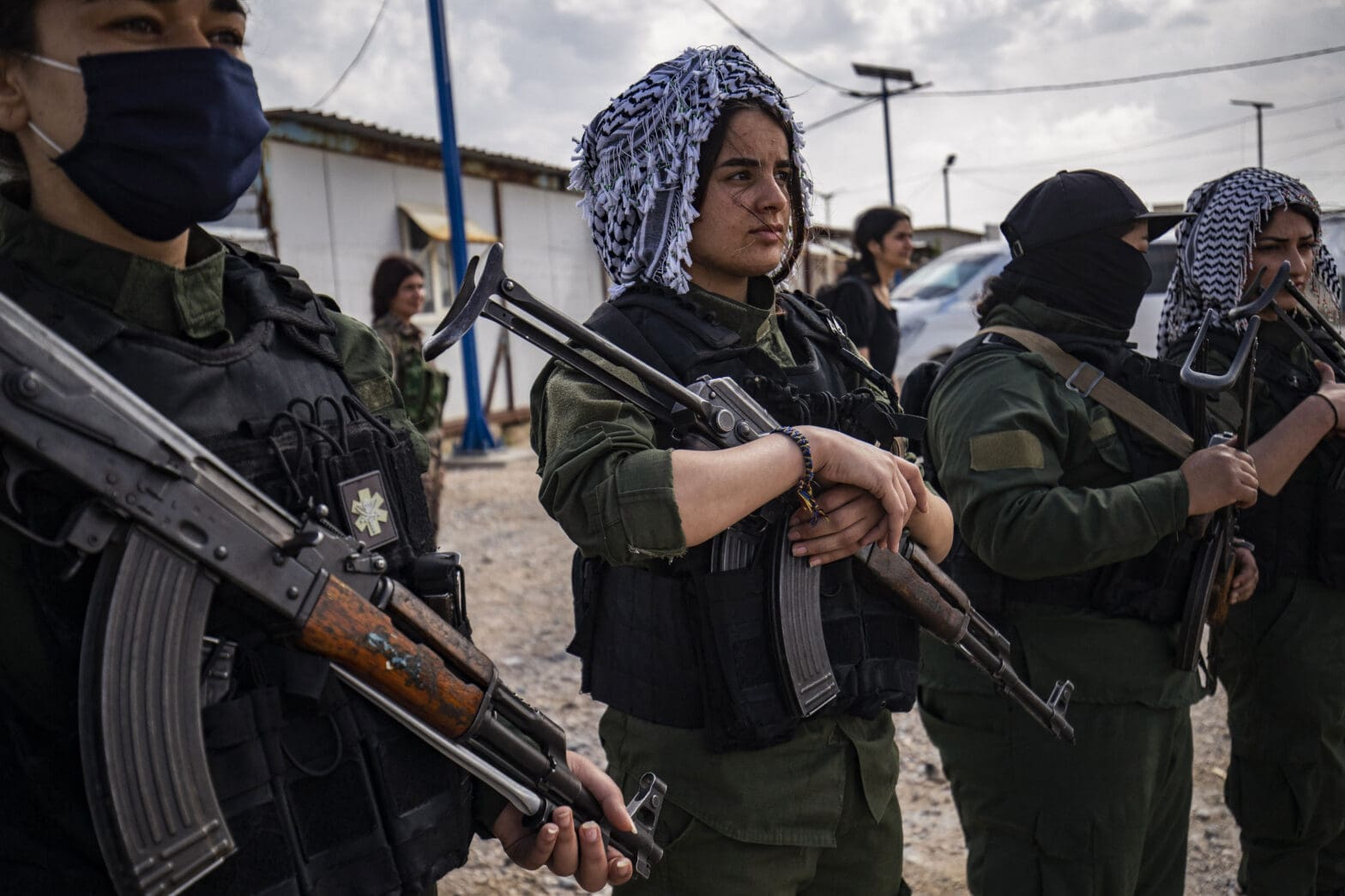
The Litmus Test:
Post-Assad Syria and the SDF
Policy Note, August 2025
Introduction
The collapse of the Bashar al-Assad regime in December 2024 marked a watershed moment for Syria and the wider Middle East after almost a decade of civil war.1 Throughout the conflict, Syria constituted a staging ground for geopolitical rivalries, spawning proxy conflicts and involving great powers, including the United States and Russia.2 Among the most consequential results was the emergence of a Kurdish-dominated enclave in northeastern Syria, where the People’s Protection Units (YPG) established a proto-state in 2012 and became a formidable U.S. ally in the war against the Islamic State group.3 The future of the enclave is particularly important because it will have a decisive impact on the trajectory of the Syrian state, including its territorial integrity, power-sharing and resource-sharing agreements, as well as its foreign policy and armed forces. As a consequence, how the interim authority engages the northeastern enclave will serve as a litmus test for its approach to other sub-state actors, with Syria hosting a plethora of powerful armed groups that have functioned outside of the state for almost a decade.
Despite facing several challenges—competition from rival armed groups, Türkiye’s opposition to an autonomous Kurdish region, and uncertainty over the future of U.S. troops in Syria—the YPG has proved a resilient force. However, as a sister organization of the Kurdistan Workers’ Party (PKK), which has fought the Turkish state for several decades, the YPG has complicated Ankara’s relationship with the U.S., while its collusion with the Assad regime undermined its ability to work with opposition groups—including Hayat Tahrir al-Sham (HTS).4 Even with the fall of the regime and the rise of HTS as the interim authority, the YPG continues to enjoy the backing of the Trump administration as the leading force within the Syrian Democratic Forces (SDF), the umbrella organization formed by Washington to combat Islamic State.5
These interconnected dynamics and the landscape of rival armed groups paint an uncertain future for Syria: it is unclear how the state can co-exist with the SDF, or how the SDF and HTS will reconcile their competing visions for Syria’s future. Clashes in the coastal region in March highlighted the country’s vulnerability to conflict relapse and indicated that substantial, deep-rooted tensions remain, which could trigger the next round of intense bloodletting.6 This policy note assesses the evolving dynamics between the YPG and the interim authority in Damascus and explores a pragmatic framework to avoid renewed conflict.
The Danger of Limbo
Following Assad’s fall, HTS and its leader Ahmed al-Sharaa underwent a remarkable transformation. Once derided as a terrorist and former member of Al-Qaeda in Iraq, al-Sharaa enjoyed a honeymoon that saw his leadership receive international support and legitimacy, as well as warm hospitality in Western and regional capitals alike.7 The international community has partly given al-Sharaa the benefit of the doubt, aided by his outreach to minorities, endorsement of reconciliation, and willingness to work with the West. His first security crisis came on March 8–9, when militias affiliated with the interim government targeted the Alawite minority.8 Over two days, more than 1,000 people, including 745 civilians, were killed in clashes between government-aligned forces and pro-regime fighters.9 Al-Sharaa has promised to bring the perpetrators of the massacre, centered around the coastal provinces of Latakia and Tartus, to justice.10 In addition, the new administration has promised an inclusive constitutional process.11 Misgivings grew when over 350 were killed in sectarian clashes between Druze militias and Bedouin tribes in Sweida in July, a still-ongoing conflict that drew Israeli airstrikes, adding a geopolitical dimension.12
As part of the new government’s outreach to the SDF, al-Sharaa and SDF General Commander Mazloum Abdi signed an agreement in March that laid the foundation for the SDF’s integration into the national army and the formal recognition of Kurdish rights.13 This included plans to form follow-up committees, including one to study the mechanism of integration; Abdi asserted his opposition to the existence of two parallel armies in the country.14 However, the deal was followed by a Kurdish denunciation of the interim constitution proposed by al-Sharaa.15 The SDF’s political wing said the interim constitution “reproduces authoritarianism” and enforces centralized rule, in contrast to SDF calls for a fair distribution of power and a decentralized system of governance.16
This indicates that reconciliation between Damascus and the authorities in the northeast forms part of a bigger settlement concerning the constitutional future of Syria. The parameters of governance in Syria are also inextricably tied to geopolitical dynamics, as Syria constitutes a staging ground for geopolitical rivalries. Countries such as the U.S., Türkiye, Russia and Iran have a deep-rooted presence in Syria, including political, security and economic footprints.17 Türkiye is determined to prevent the emergence of an autonomous region in the northeast. Tensions have eased since PKK leader Abdullah Öcalan called for the PKK’s dissolution, but that may have merely enabled a less confrontational tone from Ankara, rather than a change in policy.18 Türkiye and Damascus continue to call for the integration of armed groups into the state as per Article 9 of the interim constitution, which prohibits armed groups from operating outside of the state.19
It is inconceivable that there could be a lasting settlement between the YPG and HTS without the endorsement of Ankara. When the Assad regime and Russia carried out a relentless bombing campaign against the HTS-controlled Idlib region, Türkiye’s role was instrumental in preventing its fall.20 Türkiye also succeeded in preventing the YPG from expanding its enclave toward the city of Manbij and suppressed the group’s expansionist ambitions.21 Looking ahead, the role of the U.S. will remain pivotal. Should American forces withdraw, both Damascus and Ankara may perceive a strategic opening. In such a scenario, they could feel justified—or even compelled—to launch military operations against the SDF in an attempt to reassert control over contested territories.
It is noteworthy that Türkiye has cautiously welcomed the HTS-SDF deal. However, contradictions remain over its implementation and which interpretation Ankara endorses.22When the deal was announced, it was described as a preliminary agreement to incorporate the SDF into the Syrian Ministry of Defense, along with the integration of all associated civilian and military institutions into the Syrian state.23 The agreement guarantees all Syrians’ right to political representation and participation in government institutions.24 It officially acknowledges the Kurdish community as a vital part of Syria and affirms their citizenship and constitutional rights, prioritizing the safe return of all Syrians displaced by the conflict to their original homes, a key concern for the SDF, especially regarding Kurds displaced by Turkish-backed attacks.
The agreement calls for a nationwide ceasefire and commits both parties to integrating civil and military institutions in northeastern Syria into the Syrian state, including borders, airports, and energy resources. On the surface, the agreement marked a monumental development—the demobilization of a powerful armed group and its administrative functions within months. Yet, the deal soon revealed shortcomings: it was vague and lacked implementation mechanisms. It had not dissolved the SDF as an independent entity, and its provisions for integrating northeastern Syria’s administration into the Syrian state remain ambiguous—potentially allowing for decentralized power-sharing or centralized control by Damascus.
In other words, no comprehensive military or administrative reintegration is underway. This may be positive, as integrating the SDF and its administration into the Syrian state is implausible while the country remains in transition and wider political and constitutional issues persist. Postponement may be necessary, since SDF demobilization and integration are tied to the political rights of Syria’s historically repressed Kurds and other armed groups yet to submit to state authority. There are also intra-Kurdish challenges, as the SDF represents only one faction and faces criticism for monopolizing power and marginalizing rivals.25
That said, a conference on Kurdish unity in northeastern Syria (Rojava) in April brought together representatives from the Kurdish National Council (the umbrella opposition organization in Syria’s north-east), the ruling Democratic Union Party (PYD), and representatives of Iraqi Kurdistan’s ruling parties.26 The KNC prefers a conventional federalist model for Syria, including a separate constitution for the northeast, while the PYD would prefer more localized, commune-based governance as part of a decentralized Syria.27 Although the conference did not resolve divisions between Kurdish factions, it did indicate that there is scope and potential for dialogue, which could be pivotal to mitigating intra-Kurdish divisions as negotiations with Damascus continue.
That said, waiting for constitutional, legislative and political processes to reach completion could pave the way for unintended consequences, spoilers of peace and stagnation. Libya and Iraq exemplify these issues. In both instances, post-conflict transitions saw political elites and armed factions regroup and consolidate their influence, while drawing on and diverting public resources to expand their patronage networks. In other words, amid political uncertainties and social grievances, rivalries are exacerbated as factions vie for influence and resources, and as external actors see openings to re-assert their influence.28
However, one success story of the immediate aftermath of the 2003 invasion of Iraq was the historic peace between the Kurdish region and Baghdad, one that was underpinned by constitutional provisions that laid out power-sharing and resource-sharing mechanisms.29 The success of that arrangement, in stark contrast to the dynamics that unfolded between predominantly Arab Sunni and Shiite factions in Baghdad, was the fact that the foundation for the constitutional negotiations between Erbil and Baghdad was laid before the war itself, as a result of decades-long ties between Kurdish and Arab opposition groups.30
In contrast, the absence of a functioning relationship amongst (and within) rival Arab Sunni and Shiite factions within Baghdad, in addition to the rush to secure a constitution, saw a combination of Western-backed and traditional Iraqi parties play an outsized role in the post-conflict transition process—at the expense of powerful groups such as the Sadrist movement, who commanded considerable influence and mobilized into a paramilitary force in response. 31 This also opened up opportunities for extremist groups and external actors to contest the post-2003 political order.32
Building on Experience
One lesson from Iraq, and elsewhere, is that Syria’s immediate fate will depend on several inter-connected factors: constitutional processes, reconciliation, security sector reform and the empowerment of the civilian population through the rule of law and accountability. However, it is also possible to enable and support such processes by drawing on existing administrative and governing structures, even if such structures do not operate through the state itself. This is particularly important if conventional state-building practices are undertaken through a state-centric view of governance and security, where a Weberian state is imposed on pre-existing governance structures.
Syria’s existing landscape was designed to circumvent centralized authority in Damascus: it is comprised of a plethora of local and transnational armed non-state actors, who have substantial external ties, sub-state capabilities and who have far-reaching networks, relations and resources, as part of self-governing structures that were developed to challenge and circumvent the Assad regime.
Indeed, HTS and its somewhat stable authority since coming into office is the result of several years of experience administering Idlib. The group developed and controlled civic councils in the enclave to meet the urgent humanitarian needs of their communities, drawing on Turkish military protection and donor institutions, often in either direct partnership or coordination with other rebel groups.33 According to studies, welfare services were provided by civilian-run city and town councils, in addition to emergency relief and municipal services, such as waste removal and water supply.34 Similarly, in Kurdish-controlled areas in the north east, there has been functioning legislative, judicial, and executive councils, and the area remains the most stable part of the country.35
As Syria’s islands of stable governance for the past decade, Idlib and the northeast can guide efforts by Damascus to shape a political and constitutional roadmap. In purely practical terms, Syria’s interim rulers have their hands full as they grapple with the urgent need for public services, welfare, a functioning economy and the rule of law. By engaging the SDF-administered territories as they are and embracing the stable political order in those areas, HTS also has an opportunity to capitalize on the SDF’s disciplined military and administrative structures, its counter-terrorism partnership with the U.S., and its wider sub-state structures, to address challenges to the post-Assad political order.
Towards an Arrangement
There are several areas where Damascus and the SDF can find common interest. One example is counter-terrorism; neither HTS nor the SDF wants to see a resurgence of the Islamic State group or its ilk.36 For HTS, counter-terrorism also presents an opportunity to improve and expand its ties to the U.S. The Trump administration is still formulating its policy on Syria, but as it stands, Washington will continue to rely on and support the SDF as part of the ongoing campaign against the jihadist group. This could be critical to securing reconstruction support.
The SDF will also be critical to securing and protecting Syria’s hydrocarbons infrastructure. As a state in limbo, Syria is vulnerable to attacks on commercial and strategic infrastructure, which requires the deployment of personnel, intelligence gathering and support from local communities. The SDF, as the predominant force in the northeast, has intelligence-gathering capabilities that go beyond the territories it controls, while also enjoying access to Western intelligence and cross-border relations with authorities in Iraq.37 This will enhance Syria’s capacity to encourage foreign investment; studies indicate that foreign investors measure risk by evaluating whether the host country has the capability to deal with terrorism and if it has counter-terrorism relations with the West.38
The crux of the issue may not necessarily be whether the SDF and HTS cooperate, but the form this cooperation takes. The SDF will seek to maintain its autonomy within the framework of decentralized governance, while HTS seeks its absorption into the Syria state. However, as the two sides attempt to identify a compromise and determine the terms of their co-existence, what is clear is that both share the goals of preventing the restoration of the former regime, thwarting any potential insurgency by Assad loyalists, and stopping external actors destabilizing the new Syria.
The inconvenient truth is that Syria is susceptible to a relapse of conflict, due both to domestic rivalries and external actors who may look to re-assert their presence and influence in the country. Events in Sweida exemplify the tensions that could lead to a conflict involving external actors. A similar eruption of violence could occur elsewhere, including in Alawite-dominated areas influenced by Iran and its allies, such as Hezbollah and Iraq’s PMF.39 Iran is also uneasy about HTS’s rise and Türkiye’s dominance as Syria’s main external actor.40 In this context, the SDF could be a valuable ally to Damascus in countering potential insurgency, militarily and politically.
Moreover, the decentralized system that this requires means maintaining the autonomy of the SDF in its administration of the northeast and its role as a security provider. This will prove contentious with Türkiye. However, Damascus can work in synergy with the SDF by establishing joint forces that operate under the purview of the central government and include fighters drawn from the ranks of both of the SDF and the Syrian Ministry of Defense. In this way, Damascus could establish the stepping-stone for a wider national army by signaling the merits of integration to other armed groups—such as the militias from the Druze community—who have refused to join the Ministry of Defense and are wary of integrating into the Syrian state.41
Turkish concerns could be eased by making decentralized governance—and any broader Damascus–SDF settlement—conditional on the SDF sharing power with rival Kurdish factions in the Kurdish National Council, seen by Ankara as a check on the SDF’s monopoly.42 Ultimately, al-Sharaa and the interim government in Damascus must chart their own path forward with the SDF and play a proactive role to secure Turkish support for this strategy. While Türkiye opposes the SDF keeping its military and security structures, it may accept joint forces and centers combining Syrian army and SDF members under Damascus’s command, similar to joint brigades between the Iraqi army and Kurdish Peshmerga.43
Al-Sharaa can play an important role in securing such compromises, de-escalating tensions between the SDF and Türkiye as well as between the SDF and the wider Turkish-backed Syrian National Army (SNA), an amalgamation of Turkish-backed anti-Assad groups. Notably, the SNA is officially integrated under the Ministry of Defense but its factions have retained their own command and control structures.44
In the midst of precarious post-conflict transitions, neither decision-makers nor the population have the luxury of time. That is why it is imperative that al-Sharaa’s government and the SDF move quickly to establish a modus vivendi premised on plugging vacuums that will otherwise be exploited to destabilize the country. In doing so, Damascus and the SDF can begin the exercise of developing a functioning relationship premised on goodwill, trust and common interests. The goal is not to engineer a perfect political settlement, but to pursue a durable, if imperfect, détente that acknowledges the reality on the ground and prioritizes stability over symbolic consensus. Such an arrangement should prioritize immediate wins over unrealistic ambitions to engineer political and constitutional structures, moves that would face deep-rooted, violent resistance.
Endnote
1 “Bashar al-Assad: Sudden downfall ends decades of family’s iron rule,” BBC News, December 9, 2024, https://www.bbc.co.uk/news/10338256.
2 Nesrin Alrefaai, “Syria Between Civil and Proxy War: The Question of Terminology,” London School of Economics, July 13, 2023, https://blogs.lse.ac.uk/mec/2023/07/13/syria-between-civil-and-proxy-war-the-question-of-terminology/.
3 Michael Knights and Wladimir Van Wilgenburg, Accidental Allies: The US–Syrian Democratic Forces Partnership Against the Islamic State, (Washington, DC: The Washington Institute for Near East Policy, June 22, 2021), https://www.washingtoninstitute.org/policy-analysis/accidental-allies-us-syrian-democratic-forces-partnership-against-islamic-state.
4 “Turkey on a collision course with Syria over Kurdish support in Afrin,” Sky News, October 19, 2018, https://news.sky.com/story/turkey-on-a-collision-course-with-syria-over-kurdish-support-in-afrin-11257896.
5 “Pentagon Allocates $130 Million in 2026 for Syrian Democratic Forces Operations”, Kurdistan 24, July 6, 2025, https://www.kurdistan24.net/en/story/850229/pentagon-allocates-130-million-in-2026-for-syrian-democratic-forces-operations.
6 Hugo Bachega and Jake Lapham, “Worst violence in Syria since Assad fall as dozens killed in clashes,” BBC News, March 7, 2025, https://www.bbc.co.uk/news/articles/cdrxkm2evnlo.
7 Eliott Brachet, Nissim Gasteli, and Benjamin Barthe, “Syrian President Ahmed al-Sharaa, weakened by sectarian violence, looks to rebuild ties with France,” Le Monde, May 7, 2025, https://www.lemonde.fr/en/international/article/2025/05/07/syrian-president-ahmed-al-sharaa-weakened-by-sectarian-violence-looks-to-rebuild-ties-with-france_6741006_4.html.
8 William Christou, “More than 1,000 people killed in two days of clashes in Syria, war monitor says,” The Guardian, March 9, 2025, https://www.theguardian.com/world/2025/mar/09/more-than-1000-people-killed-in-two-days-of-clashes-in-syria-war-monitor-says.
9 Christou, “More than 1,000 people killed.”
10 Lucy Clarke-Billings and Gabriela Pomeroy, “Syria leader vows to hunt down those responsible for bloodshed,” BBC News, March 10, 2025, https://www.bbc.co.uk/news/articles/crknjgrd3geo.
11 David Gritten, “Syria leader signs temporary constitution for five-year transition,” BBC News, March 14, 2025, https://www.bbc.co.uk/news/articles/c70ely2p6e4o.
12 “Syria leader vows to protect Druze after sectarian violence prompts Israeli strikes”, BBC News, July 17, 2025, https://www.bbc.co.uk/news/articles/cg5z3jqe673o.
13 William Christou, “Syrian government reaches deal with Kurdish-led SDF to integrate north-east region,” The Guardian, March 10, 2025, https://www.theguardian.com/world/2025/mar/10/syrian-government-reaches-deal-with-kurdish-led-sdf-to-integrate-north-east-region.
14 “Commander of Syrian Kurdish-led militia rejects disarmament,” Kurd Press, January 20, 2025, https://en.kurdpress.com/news/159874/Commander-of-Syrian-Kurdish-led-militia-rejects-disarmament.
15 “Statement on the Interim Government’s Draft Constitutional Declaration,” Syrian Democratic Council, March 14, 2025, https://m-syria-d.com/en/?p=8290.
16 “Statement on the Constitutional Declaration.”
17 “Syria in maps: Who controls the country now Assad has gone?” BBC News, December 13, 2024, https://www.bbc.co.uk/news/articles/c2ex7ek9pyeo. See also, for example, “Qatar to Fund More Gas For Syria to Boost Power Output”, Bloomberg, July 31, 2025, https://www.bloomberg.com/news/articles/2025-07-31/qatar-to-pay-for-syria-to-get-more-piped-gas-from-azerbaijan?embedded-checkout=true.
18 “PKK to disband, potentially ending decades of conflict in Turkiye,” Al Jazeera, May 12, 2025, https://www.aljazeera.com/news/2025/5/12/kurdish-pkk-to-disband-potentially-ending-decades-of-conflict-turkey.
19 “Syria’s new constitution: Dashing hopes for progress,” The New Region, March 19, 2025, https://thenewregion.com/posts/1827/syria-s-new-constitution-dashing-hopes-for-progress.
20 Patrick Wintour, “Russia and Turkey to set up Idlib buffer zone to protect civilians,” The Guardian, September 17, 2019, https://www.theguardian.com/world/2018/sep/17/russia-and-turkey-to-set-up-idlib-buffer-zone-to-protect-civilians.
21 “YPG confirms withdrawal from Syria’s Manbij after Turkey-US deal,” Al Jazeera, June 5, 2018, https://www.aljazeera.com/news/2018/6/5/ypg-confirms-withdrawal-from-syrias-manbij-after-turkey-us-deal.
22 “Turkey’s Erdogan welcomes Syrian deal with Kurdish forces,” Reuters, March 11, 2025, https://www.reuters.com/world/middle-east/turkey-cautiously-optimistic-about-syrian-deal-with-kurdish-forces-official-says-2025-03-11/.
23 “Syria’s government signs deal with Kurdish-led SDF forces in the northeast,” France 24, March 10, 2025, https://www.france24.com/en/live-news/20250310-?-syria-s-government-signs-deal-with-kurdish-led-authorities-in-the-northeast.
24 France 24, “Syria’s government signs deal.”
25 Daniel Serwer and Koen van Wijk, “Divided Syria: An examination of stabilization efforts and prospects for state continuity,” Middle East Institute, April 26, 2022, https://www.mei.edu/publications/divided-syria-examination-stabilization-efforts-and-prospects-state-continuity.
26 “SDF chief says division of Syria not goal of pan-Kurdish conference,” Rudaw, April 26, 2025, https://www.rudaw.net/english/middleeast/syria/260420252.
27 Sirwan Kajjo, Prospects for Syrian Kurdish Unity: Assessing Local and Regional Dynamics, Policy Note 86 (Washington, D.C.: the Washington Institute for Near East Policy, October 2020), https://www.washingtoninstitute.org/media/3879.
28 “Iran rejects claims of involvement in Syria violence,” AlArabiya English, March 10, 2025, https://english.alarabiya.net/News/middle-east/2025/03/10/-no-justification-for-attacks-on-alawites-and-other-minorities-in-syria-iran-.
29 Brendan O’Leary, How to Get Out of Iraq with Integrity (Philadelphia, P.A.: University of Pennsylvania Press, 2008).
30 O’Leary, How to Get Out of Iraq with Integrity.
31 “‘This constitution was written by exiles. We will not accept it’“, The Times, August 29, 2005, https://www.thetimes.com/world/us-world/article/this-constitution-was-written-by-exiles-we-will-not-accept-it-8rn5pq2d9bx.
32 Patrick Cockburn, Muqtada al-Sadr and the Fall of Iraq (London: Faber & Faber, 2008).
33 José Ciro Martínez and Brent Eng, “Stifling stateness: The Assad regime’s campaign against rebel governance,” Security Dialogue 49, no. 4 (August 2018): 235–53, https://doi.org/10.1177/0967010618768622.
34 Martínez and Eng, “Stifling stateness.”
35 Rana Khalaf, Governing Rojava: Layers of Legitimacy in Syria, Research Paper (London, UK: Chatham House, December 2016), https://www.chathamhouse.org/sites/default/files/publications/research/2016-12-08-governing-rojava-khalaf.pdf.
36 Tim Lister and Eyad Kourdi, “ISIS claims first attacks against forces loyal to new government in Syria,” CNN, May 31, 2025, https://edition.cnn.com/2025/05/31/middleeast/isis-attacks-syria-government-forces-intl.
37 Knights and van Wilgenburg, Accidental Allies.
38 Chia-yi Lee, “Terrorism, Counterterrorism Aid, and Foreign Direct Investment,” Foreign Policy and Economic Statecraft 13, no. 1 (January 2017), https://www.jstor.org/stable/26168140.
39 Ahmad Sharawi, “Analysis: Continued chaos in Syria: Iraqi militias and an Alawite Insurgency,” Long War Journal (blog), January 29, 2025, https://www.longwarjournal.org/archives/2025/01/analysis-continued-chaos-in-syria-iraqi-militias-and-an-alawite-insurgency.php; “Alawite Insurgents Seek to Use Sectarian Violence to Destabilize the Interim Government in Syria,” Institute for the Study of War, April 3, 2025, https://www.understandingwar.org/backgrounder/alawite-insurgents-seek-use-sectarian-violence-destabilize-interim-government-syria.
40 Gönül Tol and Alex Vatanka, “War of words as Turkey-Iran tensions escalate over Syria, Iraq,” Middle East Institute, March 18, 2025, https://www.mei.edu/publications/war-words-turkey-iran-tensions-escalate-over-syria-iraq.
41 Christina Goldbaum and Reham Mourshed, “These Militias Refuse to Join Syria’s New Army,” The New York Times, April 1, 2025, https://www.nytimes.com/2025/04/01/world/middleeast/syria-israel-border.html.
42 “Syrian Kurds set to hold unified conference to discuss future, rights,” The New Arab, April 23, 2025, https://www.newarab.com/news/syrian-kurds-set-hold-unified-conference-discuss-future.
43 “Iraqi Defense Ministry to form 20th Joint Brigade with Peshmerga,” K24, November 27, 2023, https://www.kurdistan24.net/en/story/393279/Iraqi-Defense-Ministry-to-form-20th-Joint-Brigade-with-Peshmerga.
44 Amr Mostafa and Lizzie Porter, “Syrian armed groups agree to disband and join defence ministry, says new administration,” The National, December 24, 2024, https://www.thenationalnews.com/news/mena/2024/12/24/syrian-armed-groups-agree-to-dissolve-and-join-defence-ministry-says-new-administration/.
